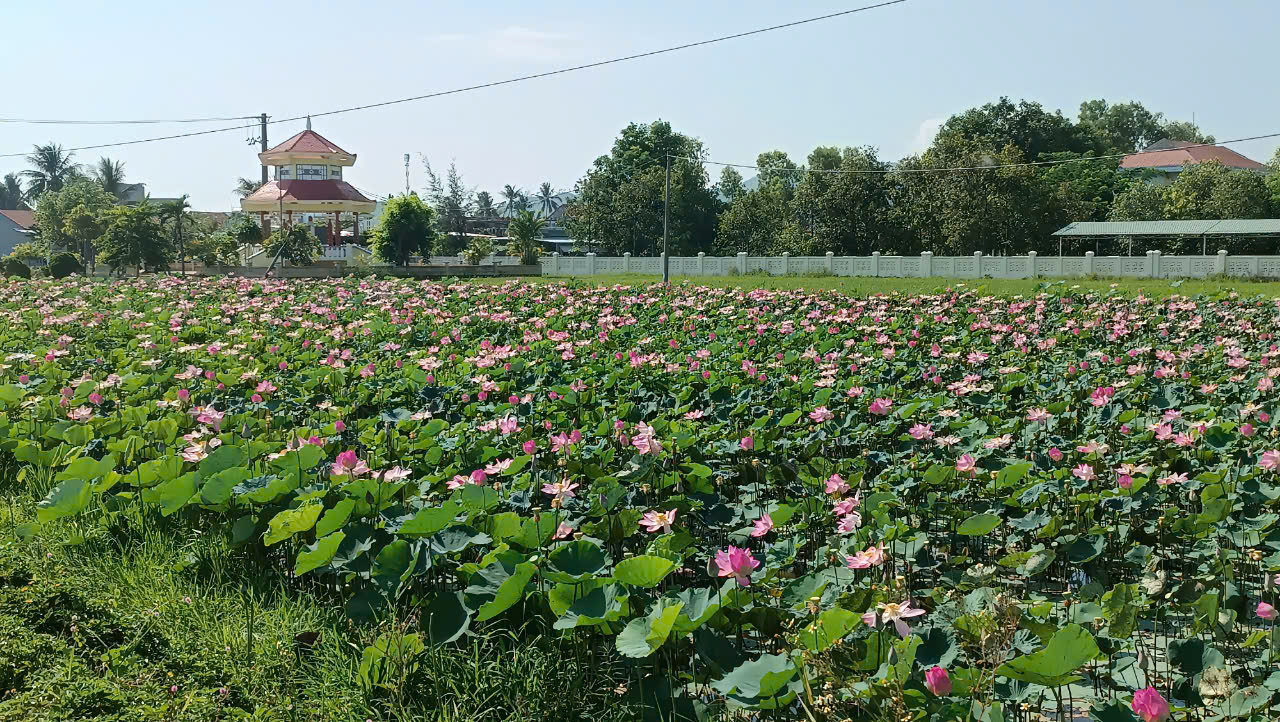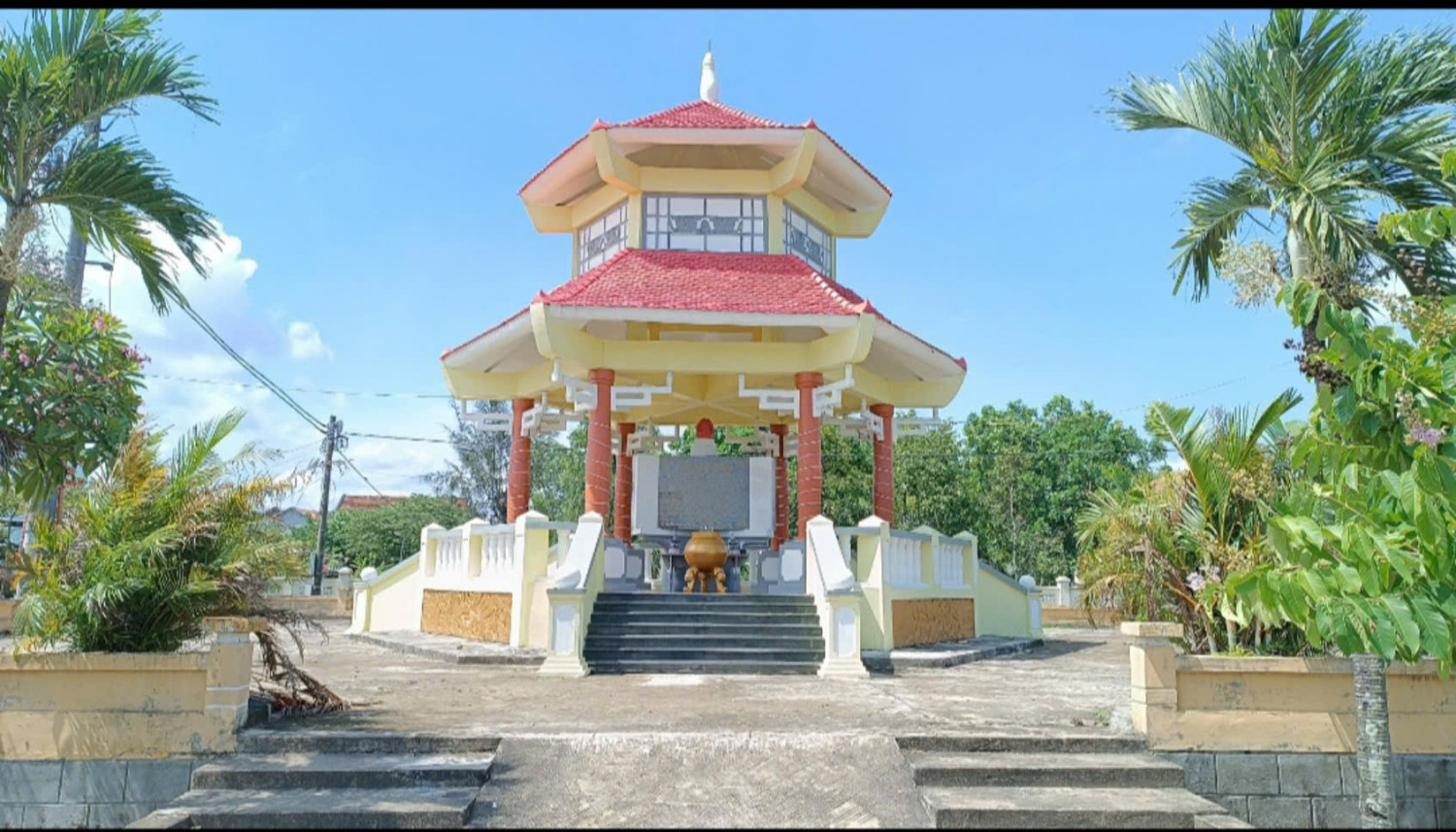General introduction
Hoa Tan Tay Commune is located in the East of Tay Hoa District, 02km from the district center and about 20km from Tuy Hoa city center. The current population is 8,399 people with 2,626 households, divided into 04 villages (including Hoi Cu Village, Xuan Thanh 1 Village, Phu Khanh Village, Xuan Thanh 2 Village); the total natural area of the commune is 1,622.38 hectares, of which the agricultural land area is 932.22 hectares, the forest area is 484.08 hectares, 80% of the population lives on agriculture. As a purely agricultural commune, the majority of the people live mainly on agriculture.

Hoa Tan Tay commune has 02 provincial-level historical and cultural relics, namely the Battle Against the Sweep in Hoa Tan commune and Le Trung Lap Church; Le Trung Lap Church is a material evidence related to the historical figure Le Trung Lap, who had great contributions in the migration, settlement, creation of many residential areas and expansion of cultivated areas in the Tuy Hoa plain in the late 19th and early 20th centuries. The historical figure Le Trung Lap was named Le Trung Vinh when he was young, born in the year of Giap Thin 1844, in Hoi Cu village, Hoa Lac commune, Tuy Hoa district (now Hoi Cu village, Hoa Tan Tay commune, Tay Hoa district, Phu Yen province). He came from a family that had settled in the locality for many generations and had a fairly stable economy. When he was young, he studied Chinese but did not pursue the path of imperial examinations. Instead, he took land reclamation, production development, and creating conditions for the poor to stabilize their lives as a way to establish his career.

Since starting his career, Le Trung Lap followed and assisted Mr. Tran Lang in recruiting people to reclaim many areas of Hoa My and Son Lac communes. In the 36th year of Tu Duc (1883), Le Trung Lap was granted a certificate of Grave Manager by the Phu Yen Provincial Governor. He used his own money to recruit and organize people, most of whom had no land or property, and were migrants from many directions, to reclaim the lands along the foot of the mountains in the southern range of Tuy Hoa prefecture (now called Deo Ca range), which were wild, swampy lands with many wild animals,... that had not been exploited by previous generations. In the 8th year of Thanh Thai (1896), Le Trung Lap was appointed as the Chief of Tuy Loc commune, later Hoa Loc commune with 8 villages. In 1899, he established Hoi Khanh village, merged into Hoa Lac commune and brought his family here to live, further developing the Le clan in this village. Hoi Khanh village later merged with Phu Quy and Phu Lac villages and took the name Phu Khanh village, which is Phu Khanh village today.
To recognize and honor those who contributed to the implementation of the land reclamation policy, in the 4th year of Khai Dinh (1919), Le Trung Lap was awarded the title of Chanh Bat Pham Van Giai by the Royal Court. He passed away on July 14, Ky Mui year (1919), and in the 9th year of Khia Dinh (1924), he was granted the title of Khai Canh Chi Than by the Royal Court. After his death, the people of Hoi Khanh village and the villages in Hoa Loc commune honored him as the pioneer of land reclamation.
The location of the Battle Against the Sweep in Hoa Tan Commune in 1967 was the place to prevent and defeat the enemy's plot to use a "three-ring encirclement" of infantry, tanks and mines to enter the two villages of Xuan Thanh and Hoi Cu (Hoa Tan Commune, Tuy Hoa District) - now in Hoa Tan Tay Commune (Tay Hoa District) and Hoa Tan Dong (Dong Hoa District) to attack our army and people's forces for 3 days: September 19, 20 and early morning of September 22, 1967./.

Scene of the Battle of Hoa Tan Commune

Historical and cultural relic of the Battle of Canh in Hoa Tan commune
After more than 10 days and nights of continuous fighting, with a heroic and resilient spirit, our army and people destroyed 215 enemies (including 2 American advisors), burned 2 M113 vehicles and 1 helicopter. In this anti-dumping battle, 94 of our comrades, officers, soldiers, and militia and guerrillas, sacrificed their lives. That is a pride of the commune./.
-
 Vietnam affirms sovereignty over the Hoang Sa and Truong Sa archipelagos.
Vietnam affirms sovereignty over the Hoang Sa and Truong Sa archipelagos.
-
 ELEVEN SESSION (SPECIAL SESSION), PEOPLE'S COUNCIL OF HOA TAN TAY COMMUNE, TERM XIII, 2021-2026
ELEVEN SESSION (SPECIAL SESSION), PEOPLE'S COUNCIL OF HOA TAN TAY COMMUNE, TERM XIII, 2021-2026
-
 Launching Ceremony of Action Month for Gender Equality and Prevention of Gender-Based Violence
Launching Ceremony of Action Month for Gender Equality and Prevention of Gender-Based Violence
-
 CONFERENCE TO DISSEMINATE SOCIAL INSURANCE AND HEALTH INSURANCE POLICIES IN HOA TAN TAY COMMUNE
CONFERENCE TO DISSEMINATE SOCIAL INSURANCE AND HEALTH INSURANCE POLICIES IN HOA TAN TAY COMMUNE
-
 PROPAGANDA ON DISEASE PREVENTION
PROPAGANDA ON DISEASE PREVENTION
-
 CONFERENCE TO DISSEMINATE SOCIAL INSURANCE AND HEALTH INSURANCE POLICIES IN HOA TAN TAY COMMUNE
CONFERENCE TO DISSEMINATE SOCIAL INSURANCE AND HEALTH INSURANCE POLICIES IN HOA TAN TAY COMMUNE
-
 Tay Hoa: Building a united, prosperous and happy residential area
Tay Hoa: Building a united, prosperous and happy residential area
-
 Tay Hoa: Building a united, prosperous and happy residential area
Tay Hoa: Building a united, prosperous and happy residential area
-
 CONFERENCE TO DISSEMINATE SOCIAL INSURANCE AND HEALTH INSURANCE POLICIES IN HOA TAN TAY COMMUNE
CONFERENCE TO DISSEMINATE SOCIAL INSURANCE AND HEALTH INSURANCE POLICIES IN HOA TAN TAY COMMUNE
-
 CONFERENCE TO DISSEMINATE SOCIAL INSURANCE AND HEALTH INSURANCE POLICIES IN HOA TAN TAY COMMUNE
CONFERENCE TO DISSEMINATE SOCIAL INSURANCE AND HEALTH INSURANCE POLICIES IN HOA TAN TAY COMMUNE
- Online6
- Today2,669
- This month19,769
- Total1,675,372







